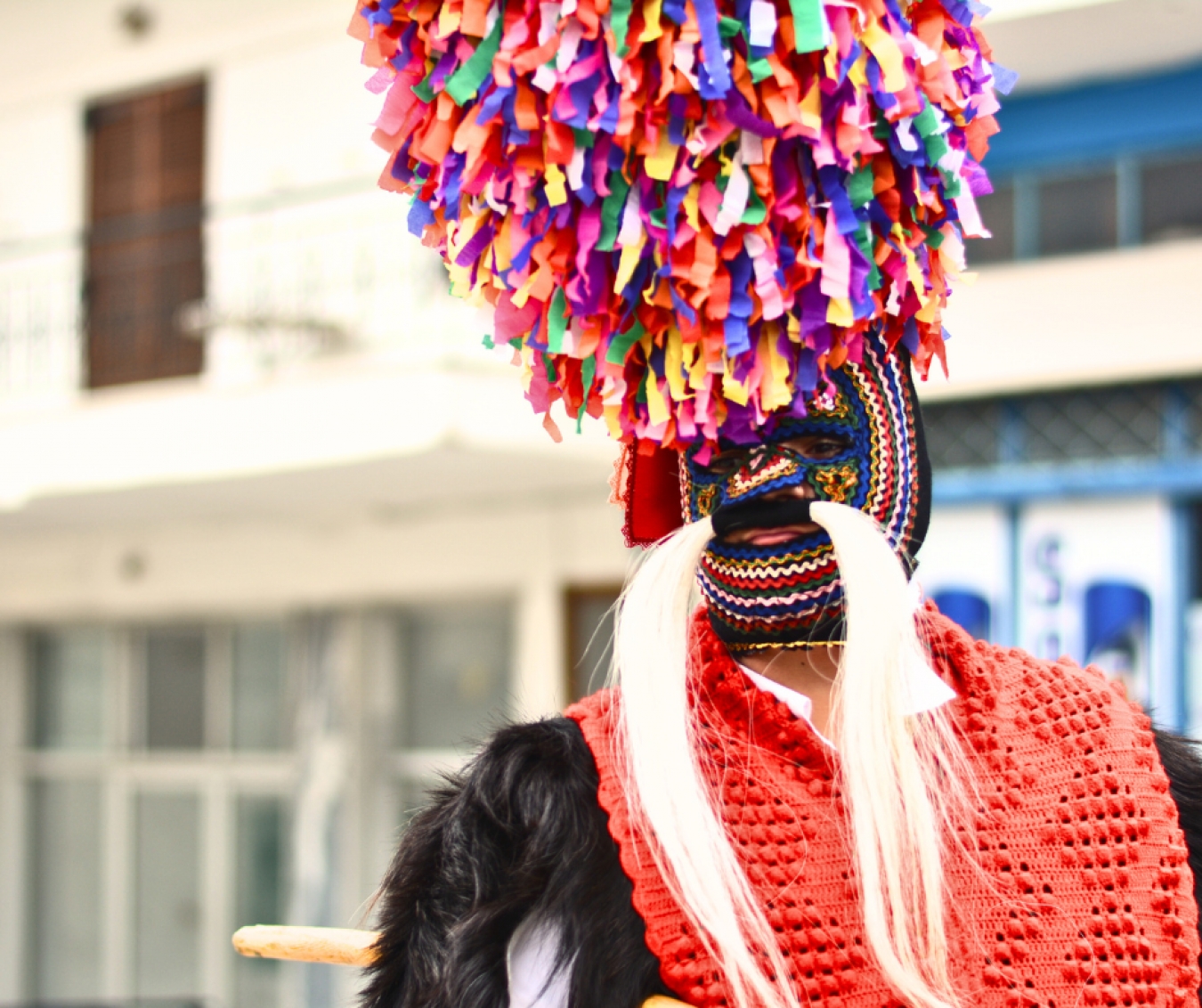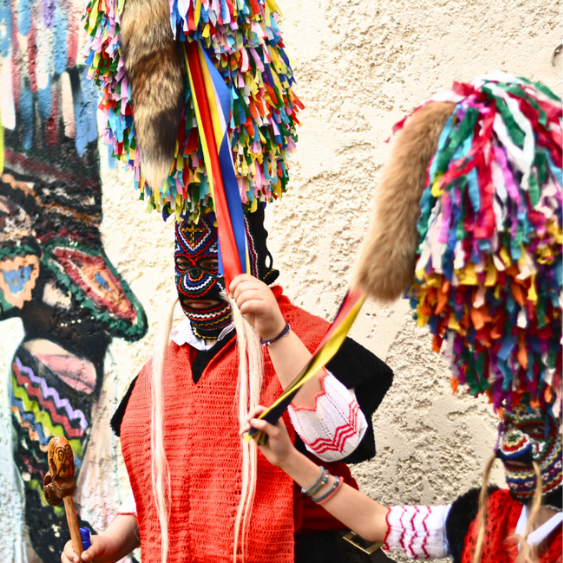The ancient custom of Koudounophori is revived every year in Sochos, Thessaloniki.

The ancient custom of the Koudounoforoi of Sohos is revived every year two weeks before Clean Monday.
The peak of the event takes place on Clean Monday and the weekend before, with the revival of the customs of Koudounophori in the streets of Sochos or Merio as the village is also called. The life of the residents is closely intertwined with the existence of the custom (and the unique phenomenon) and once the preparations lasted the whole year. Along with the distinctive Koudounophori costume, which in itself is a must-see for many in Sochos, the celebrations that begin two weeks before Clean Monday include cultural events that are revived with Koudounophori themselves as the main protagonists. On the Saturday evening before Clean Monday, we witness the custom of "Zambus", a cleansing fire in three places in the village, in order to exorcise the evil of winter. Another one, is the custom of forgiveness known as "Provotsani": the younger ones ask the older ones for forgiveness and the older ones, in turn, offer forgiveness along with an orange. The culmination of the events is the gathering-parade of the Koudounophori in the streets of the village on Clean Monday, accompanied by dancing and Lenten treats, activities and events that will bring the frenetic atmosphere of the carnival to all visitors.
The deep roots of the custom can be traced back to ancient times and seem to be connected to the spring festivals associated with fruit-bearing, the Dionysian rituals and the Bacchia. Besides, for centuries the locals believed that if the carnival did not succeed then their crops would not do well either.

The Christian tradition refers to the story of Saint Theodore the soldier who found himself in a difficult point of a war with the barbarians when they cut off the supply of the region, threatening its residents. Placing his last hopes in his deep faith and in God, the general gave orders to slaughter the last goats in the surrounding area so that the army could satisfy its hunger. But apart from this, he distributed their skins to the soldiers and asked them to wear them and even hung the animal bells on them. In this way they broke the enemy's cordon, frightening the opponents who, terrified, fled.
The impressive costume with its unique parts can weigh up to 20 kilos, which seems plausible if one considers the fact that the masqueraders carry on them, passed around a 7-meter cloth belt, a set of bells known as the "dozen" consisting of 4 small bells and a larger one, from which the name of the "Bell Ringer" (=Koudounophori) comes.
But it is not only the bells on them that arouse the interest and excite the visitors in Sochos during the Carnival season. The entire inner costume is made out of goat skin. Their elaborate, black mask is embroidered with colourful threads in vibrant colours, leaving only the eyes and mouth uncovered. The white or black whiskers that appear to hang from the mask are made of horse tail, while the headgear that bears the well-known calico, as the natives call it, has an impressive plume from which hundreds of colourful ribbons hang, and to keep its shape, it is filled with hay on the inside. This successful disguise used to provide the young people of the village with a sure way of expressing their interest in the girl they loved without revealing their true identity.

